The following history of the Lords Wharton is taken from the following primary source:
Lipscomb, George. The History and Antiquities of the County of Buckingham, vol. 1, "Pedigree of Wharton, of Winchendon and Woodburn." London, England: J. & W. Robins, 1847. pp 543-562.
archive.org/details/historyantiquiti01lips/page/n5/mode/2up
As noted in The First Whartons: How We Got Our Name, Sir Thomas Wharton, the son of Henry de Wharton and Elizabeth de Musgrave, was through whom would come the Lords Wharton.
1Sir Thomas Wharton ♂︎[1388-1440]
m. Anne Margaret Lowther ♀︎
two children: Henry♂︎ and Christopher ♂︎ ▼
He lived at Coglin and Wharton. Thomas attended the Duke of Bedford when that prince was regent in France from 1422 to 1435. He also built Wharton Hall around 1436, which the family made its official residence, abandoning Lammerside.
Sir Henry Wharton ♂︎[1437-?]
m. Alice Conyers ♀︎[1425-1520]
three children: Thomas♂︎ Joan♂︎ and Christopher♂︎
3Sir Thomas II Wharton ♂︎[1465-1531]
m. Agnes Warcop ♀︎[1470-?]
two children: Thomas♂︎,and Jane ♀︎ ▼
Lived at Wharton. Thomas was a member of Parliament.
Sir Thomas III, Lord Wharton ♂︎[1495-1568]
1st Baron
m. (1) Eleanor Stapleton ♀︎[1500-1585]
four children: Thomas♂︎ Henry ♂︎ Joane ♀︎ Anne ♀︎
m. (2) Lady Anne Talbot ♀︎ (no children) ▼
Lived at Wharton and Healough. He has been described as a stern but masterful man … and a tyrant lord. He was unpopular with the older nobility, being one of the new men on whom the Tudors relied and was constantly quarreling with someone in his community. Later in life he moved from Wharton Hall to Healough in Yorkshire because he was in constant dread that some of his enemies might do him bodily or material harm.
Sir Thomas was knighted at Windsor in 1527. He served England in a number of capacities, all either in or representing the northwestern region.
1529-1536—Member of Parliament for Appleby
1535—Appointed Sheriff of Cumberland
1537—Appointed Deputy Warden
1539—Again appointed Sheriff of Cumberland.
1541—Appointed Captaincy of Carlisle
1542-1544—Member of Parliament as Knight of the Shire for Cumberland
During the northern rebellions of 1536, he remained loyal to Henry VIII, even when the rebels marched on his house at Kirkby Stephen. They tried to force Thomas to join them, but he escaped.
During 1542, both English and Scots were preparing for war. As a warden of the Scotland marches, Thomas burnt Dumfries on 5 October, and on 23 November made another raid, doing as much damage as he could.
Meanwhile, the Scots had planned an extensive invasion of the west marches—they were said to be fourteen (or even twenty) thousand strong, while Thomas could only muster a few hundred men. With these he watched the progress of the Scots over the River Esk during the 24th, and then towards evening he attacked. The Scots became entangled in Solway Moss at the mouth of the river. Many, including nobles, were taken prisoner, killed, or drowned, while the English loss was small.
In 1543, Thomas was occupied with forays into Scotland, attempting to win over disaffected Scots nobles and obtain control of the south-west of Scotland. For his services in these matters and at Solway Moss he was, early in 1544, raised to the peerage as Baron Wharton, and in letters of the period was called "Lord Wharton."
Thomas had the town of Wharton torn down because it marred his view of the Eden Valley. The townspeople of Kirkby Stephen vilify him to this day for that.
Thomas's younger brother was martyred for his faith in 1600. During his time at Trinity College, Oxford, he converted to Catholicism and was ordained as a priest in 1584. He was arrested in 1599, confined to York Castle, and then executed. He was beatified in 1987 by Pope John Paul II as one of the "Eighty Five Martyrs of England and Wales."
Sir Thomas IV Wharton ♂︎[?]
2nd Baron
m. Lady Anne Ratclyffe ♀︎
three children: Thomas ♂︎ Philip♂︎ and Mary ♀︎ ▼
Was a member of Parliament for Cumberland from 1544–1545 and from 1547–1552; and for Northumberland from 1555–1559. He later succeeded his father in the House of Lords.
While a young man, he was appointed steward of he household of Princess Mary, the daughter of Henry VIII. He became a Roman Catholic and strongly supported Mary when she became Queen in 1553.
When Elizabeth became Queen in 1558, Protestantism was in favor and stringent laws were passed against Catholicism. Sir Thomas was sent to the Tower where he remained a prisoner for more than a year for having had mass celebrated in his house at Newhall.
Sir Philip, Lord Wharton{/u} ♂︎[1555-1625]
3rd Baron
m. Lady Francis Clifford ♀︎[1556-1592]
five children: Margaret ♀︎ Sir George ♂︎ Francis ♀︎ Eleanor ♀︎ and Sir Thomas V ♂︎ ▼
Was named in honor of Philip II of Spain who married Princess Mary, the friend of his father's. King Philip himself stood as Godfather to Philip Wharton at his baptism.
Sir Philip Wharton was a member of Parliament from 1580–1625. He was a member of the joint commission on Scottish borders in 1618 and had the honor of entertaining King James I at Wharton Hall in 1617.
The Wharton's, by the time of Sir Philip, had accumulated large estates, but he was a poor manager. He squandered his own and his wife’s fortunes. His debts accumulated and a trustee was appointed as Sir Philip was put on an allowance. His wife complained that he had taken away all her living and she was dependent on the charity of friends.
His two sons died before him: Sir George dueled with his friend, Sir James Stuart, over a game of cards in 1609, during which both combatants were slain and laid in the same grave; Sir Thomas V died in 1622, three years before his father. So, neither of Sir Philip's two sons were able to receive his inheritance. Instead the inheritance and the Barony went to his grandson, Sir Phillip II.
Sir Thomas V Wharton ♂︎[1587-1622]
m. Philadelphia Carey ♀︎
two children: Philip II♂︎ and Thomas VI ♂︎ ▼
Sir Thomas V was a puritan in faith and conduct from his youth on up. He lived at Aske, near Richmond.
For twenty years, Thomas was an officer in the Army in Ireland. He was brave, much beloved, and highly honored. The King made him a Knight of the Bath
| A British order of chivalry. The name derives from an elaborate medieval ceremony that involved, as one of it's elements, bathing (a symbol of purification). |
He married Mary Carey and the two were spoken of as the most congenial spirits that were ever met. In 1662 he retired from the army and bought a manor at Edlington, near Doncaster, Yorkshire, where he finished out his life. Sir Philip II, Lord Wharton ♂︎[1613-1696]
4th Baron
m. (1) Elizabeth Wandesford ♀︎
one child: Elizabeth ♀︎
m. (2) Lady Jane Goodwyn ♀︎
six children: Anne ♀︎ Margaret ♀︎ Thomas VI♂︎
Mary ♀︎ Philadelphia ♀︎ Goodwin ♂︎
m. (3) Anne Carr ♀︎
one child: William ♂︎ ▼
He was said to be "... in his youthful days, one of the handsomest men and greatest beaux of his times."
Sir Thomas VI served England well:
1639–1685—An active partisan member of Parliament.
1639–1685—Lord Lieutenant of Lancaster, Buckingham, and Westmoreland Counties.
1642—Appointed colonel by Parliament and given several thousand soldiers to serve at Munster, Ireland.
1642–1643—Speaker of the House of Lords.
1657—Summoned to Richard Cromwell’s House of Lords.
1657—Offered membership in Cromwell's Privy Council
| The word "privy" means "private" or "secret"; thus, a privy council was originally a committee of the closest advisors to give confidential advice on state affairs. |
He was a fierce puritan and and a strong Presbyterian. In 1643, he was a lay member of the Westminster Assembly that formulated the Confession of Faith and catechisms for that denomination.
At the restoration of the monarchy in 1660, after the First English Civil War, he met King Charles II at his landing at Greenwich and escorted him to London. Afterward, however, he frequently ran into difficult with the Crown. He became disappointed With Charles II because he was a selfish king. In 1676, he was sent to the Tower where he remained in prison for five months—for questioning the legality of the prorogation of Parliament
| Called by the King, prorogation brings to an immediate end the proceedings for the current Parliamentary session. Unless specific provision is made, no business may be carried over. While Parliament is prorogued, Members of Parliament cannot formally debate government policy and legislation, submit parliamentary questions for response by government departments, scrutinize government activity through parliamentary committees, or introduce legislation of their own. |
Then, when King James II, who was very much like his brother Charles II, ascended to the throne in 1685, Sir Philip lacked entire sympathy for him. So, he thought it advisable to leave the kingdom. He and his wife traveled through several countries on the continent where they were well received.
When Philip heard that the tide of feeling against King James II was rising he returned to England. He authored a satirical political ballad, Lilli Burlero, which was sung all over England and had a powerful influence in bringing about the revolution of 1688.
His son, Sir Thomas Wharton, was a member of Parliament at this time, and together with other leading Whigs, drew up an invitation to Prince William III of Orange (who had married Princess Mary of England) to come over with an army and defend his wife’s title to the throne. When William III came, the people flocked to him. King James II fled to France in what amounted to a practically a bloodless revolution.
In 1690 Queen Mary came from Windsor unexpectedly and dined with Lady Wharton. In 1692, both Philip and Lady Wharton entertained King William III and Queen Mary at their Woodburn manor.
The inscription on his tomb reads:
An active supporter of the English Constitution; a loyal observer, advocate and patron of reformed religion; a model alike of good works and true and living faith. 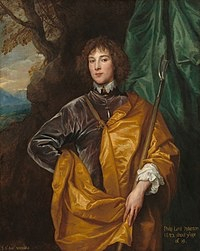  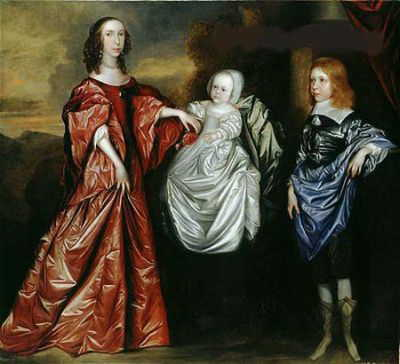  Figure 1—Philip II and three of his children: Anne, Philadelphia, and Thomas VI.
Figure 1—Philip II and three of his children: Anne, Philadelphia, and Thomas VI.
Sir Thomas VI "Honest Tom," Lord Wharton ♂︎[1648-1715]
5th Baron, 1st Marquis
m. (1) Anne Lee ♀︎ (no children)
m. (2) Lucy Loftus ♀︎
three children: Philip III♂︎ Jane ♀︎ and Lucy ♀︎ ▼
Lord Thomas was an esteemed, profound, and eloquent statesman. He was a man of intellectual force and wide political influence. In writing of him 1705, John Macky says, "He is certainly one of the completest gentlemen of England; and hath a very clear understanding, and manly expressions, with abundance of wit; he is brave in person."
He devoted himself zealously to accomplish the Revolution of 1688, which deposed the catholic James II in favor of protestant Mary II. With his father, he was the author of the invitation the Whigs sent to Prince William III. After that prince was settled on the throne as King William III, he appointed Sir Thomas Wharton Controller of the Household, and member of this Privy Council.
Typical of the Wharton Lords, Sir Thomas served England with honorable distinction:
1673-1695— Member of Parliament in the House of Lords.
1706—Created Viscount Winchendon in Bucks County (one of the estates inherited from his mother), and Earl of Wharton in Westmoreland.
1707—Member of a joint commission that negotiated and succeeded in bringing about the union of Scotland and Britain into one kingdom.
1708-1710—Appointed Lord Lieutenant of Ireland.
1714—Made Lord of the Privy Seal by King George I, and created Baron of Trim, Earl of Rathfarnham, Marquis of Catherlough in the peerage of Ireland, and Marquis of Wharton in Great Britain. He was also made Knight of the Garter.
1715—Advanced to the Marquis of Malmesbury (Wiltshire County) and Marquis of Wharton.
1716—Made a peer in Ireland as Baron of Trim, Earl of Rathfarnham, and Marquis of Catherlough.
Historian MacAuley stated, "Honest Tom Wharton had no virtues beyond consistency and courage."
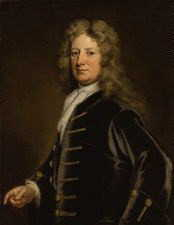 
Figure 2—Sir Thomas VI "Honest Tom,
1st Marquis Wharton.
10Sir Philip III, Lord Wharton ♂︎[1699-1731]
6th Baron, 2nd Marquis, 1st Duke
m. (1) Martha Holmes (no children)
m. (2) Maria Theresa O'Neill O'Beirne (no children) ▼
Philip has been described as profligate, eccentric, and gifted. The sponsors at his baptism were none other than King William III and Princess Anne. He was raised with an excellent education and prepared for a life as a public speaker, and so was eloquent and witty. He gained the reputation of an able, eloquent, and powerful speaker and writer.
However, he was a spoiled child. He inherited large estates in both England and Ireland, and succeeded to all the titles and abilities of his father, but very little of his virtues. At the ripe old age of 19, he was created Duke of Wharton by George I, in the King's effort to solidify his support. No other citizen of the kingdom had been so honored before he was twenty-one. However, he was notoriously extravagant and wasteful of money. By his mid 20's, he had began to accumulate staggering debts.
Philip traveled extensively while young and in Europe met James Edward Francis Stuart, the son of James II who had been deposed by his father during the revolution. Consequently, Philip became allied with the Jacobites
| So named for Jacobus, the latin form of James—those intent on winning the crown back for James II, called "The Pretender," and the Stuart dynasty. |
Shortly after, Philip became a strenuous opponent of the king's government, eventually espoused the tenets of the catholic church, and adopted the cause of the banished Stuart dynasty. In 1723, he was active in the House of Lords in opposition to Robert Walpole, England's first Prime Minister,
In 1719, Philip's first wife, Martha Holmes, gave birth to a son named Thomas, but the baby died in a smallpox epidemic the next year. From that point on, Wharton had little to do with his wife. He then went to Rome, where James II gave him the Order of the Garter, and then moved on to Madrid. Martha died in 1726 and only three months later, he married Maria Theresa O'Neill O'Beirne, a Maid of Honor to the Queen of Spain.
His behavior was growing more offensive, mainly with drunkenness, but also with inappropriate actions. At the reception for his wedding, he exposed himself to the wedding party (including his bride) to show her "what she was to have that night in her Gutts."[1]
In 1728, Philip began to write for Mist's Weekly Journal. He wrote an infamous "Persian Letter" that caused the Walpole ministry to respond violently with arrests and the destruction of the presses. The power of Wharton's name and eloquence was such that Walpole offered Wharton a pardon and forgiveness of his debts if he were to agree to leave off writing.
Philip responded with a powerful piece against the corruption under Walpole entitled, Reasons for Leaving his Native Country. Alexander Pope, noted poet of the times, referred to Wharton as "the scorn and wonder of our days" and a man "too rash for thought, for action too refined."[2]
Due to his money troubles, Philip was soon stealing food from acquaintances and seeking money anywhere he could get it. He sold his title back to George I and took a position as a lieutenant colonel in the Spanish army fighting against England. In the siege at Gibraltar in 1727, he sought to prove that he was no coward and charged at the head of his men until he was wounded in the foot.
Because he took up arms against England, his native country, he was charged with treason in 1729 and declared an outlaw. All the titles that Duke Philip held were declared forfeit. In 1730, in advanced stages of alcoholism, he and his wife moved to the Royal Cistercian Abbey of Poblet, in Catalonia, where he died 1 June 1731 as a charity patient. Upon his death, Walpole spoke of him:
With attachment to no party, though with talents to govern any, this lively man changed the free air of Westminster for the gloom of the Escurial; the prospect of King George's garter for the Pretenders; and with indifference to all religions, the frolic lord, who had written the ballad on the Archbishop of Canterbury, died in the habit of a Capuchin.
Wharton Hall and all properties were confiscated by the crown and in 1735, bought by Robert Lowther. Later the manor was used as a farm house devoted to cheese making. The hall is now desolate and in ruins. The village of Wharton that had been demolished by Sir Thomas III, 1st Baron, is now a park. Today the hall stands as an impressive reminder of the favor that the Wharton family once held in high English politics. 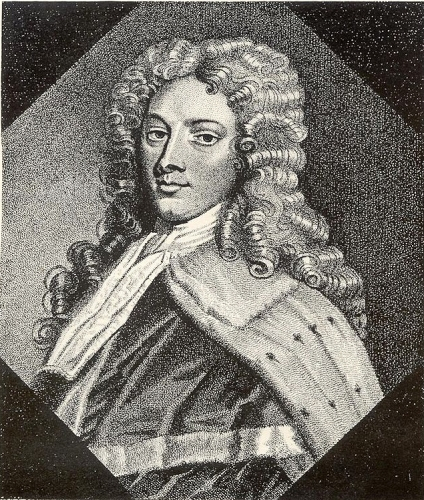 
Figure 3—Sir Philip III, Duke Wharton.
What Became of the Barony
Since there were no male heirs remaining after the Duke Philip's death, all titles should have become extinct, and that should have been the end of it. It was not. The legacy of the Wharton Barony lives on, though carried by another name. All of this occurred through a serpentine ancestry of a triad of daughters named Jane and a mistake by Parliament's Committee of Privileges in the House of Lords.
The Wharton Barony was claimed by a Charles Theodore Halswell Kemeys-Tynte (1876-1934). [3] He justified his claim through a connection to the Wharton barons through several maternal lines. The connection began with one of the daughters of Philip II, 4th Baron Wharton ... Mary Wharton (Figure 4).
Mary married Sir Charles Kemeys and they had a daughter named Jane Kemeys. Jane married Sir John Tynte and they had a daughter named Jane Kemeys-Tynte. Jane married Colonel R. Hassel and they had a daughter named Jane Hassel. This final Jane married Halswell Milbourne Johnson, who took the surname Kemyes-Tynte in 1785. This was not unusual and was a stipulation of their inheritance of the family estates. They had a son named Charles, the same man who brought the claim.
Invalid Photo #1064397
Figure 4—The Wharton Barony from Philip II, 4th Baron, to the present.
This was all well and good—the claim was justified by line of descent. Unfortunately, the letters patent that gave Sir Thomas Wharton the baronage in 1543 could not be found. This led the Parlimentary Committee to make the assumption (which turned out to be in error) that the barony was created by writ of summons to Parliament, rather than a writ of letters patent.
Why was that a big deal? In the case of letters patent, the barony could only descend to male heirs. In a writ of summons, the barony could descend to heirs in general, including female heirs. In fact, the Barony had indeed been created by letters patent—a letter was discovered much later, dated 20 March 1543 from a man named Hertford to Henry VIII, that he had on the 18th at Newcastle, delivered to Sir Thomas Wharton the king's letters patent, creating him Baron. [4]
Unaware of this, a resolution by the Committee concluded that at the death of Sir Phillip III, Duke of Wharton, the Barony should have gone to his elder sister, Lucy (by then Lady Lucy Morice). It was further determined that at Lady Lucy's death in 1739, Phillip's other sister, Lady Jane (by then Lady Jane Coke), remained the sole heir and should have been therefore entitled to the Barony.
Being the sole heir, she should have been the 7th Baroness Wharton, and was awarded that distinction after the fact. Finally, it was determined that even so, at her death, the Barony fell into abeyance because the Committee did not have the authority to terminate it because of the existence of a judgement of outlawry against the Duke of Wharton that was still in effect. And so the matter appeared dead again, at least for 72 years.
On 15 February 1916, the King George V settled the matter. The abeyance was terminated by a writ of summons from the King to Parliament in favour of Kemeys-Tynte, who became the 8th Baron after the fact. In reality, he should have been more properly listed as the 1st Baron of a new Barony.
Nevertheless, the title was inherited by his son, Charles Kemeys-Tynte, 9th Baron Wharton and thereafter by his sister, Elisabeth Kemeys-Tynte (who became Elisabeth Arbuthnot), 10th Baroness Wharton. At Elisabeth's death in 1974, the Barony again fell into abeyance, but was once again revived in 1990 in favor of Ziki Robertson (1934-2000), 11th Baroness Wharton (Figure 4).
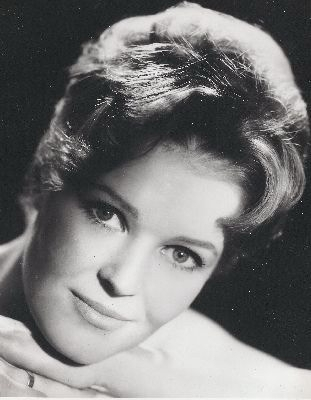    Figure 5—Myrtle Arbuthno as Ziki Arnot and Lady Robertson, 11th Baroness Wharton
Figure 5—Myrtle Arbuthno as Ziki Arnot and Lady Robertson, 11th Baroness Wharton
Ziki was the daughter of Elisabeth Kemeys-Tynte and David George Arbuthnot, born Myrtle Arbuthnot. She was brought up in South Africa but moved to England in her teens. Know professionally as Ziki Arnot, she was a photographer, model, and actress, performing in the 1957 film Sword of Freedom.
Lady Wharton officially became a member of the House of Lords in April 1990, sitting as a crossbencher (independent member). In the House of Lords, she spoke regularly on the subject of animal welfare and was considered a passionate animal rights activist.
In 1999, with the passage of the House of Lords Act, she lost her automatic seat in the House of Lords, along with all other Hereditary Peers. Later that same year, after the reform, she was elected to serve as one of the 92 hereditary peers to remain in the House of Lords.
Lady Wharton married Henry McLeod Robertson, and so her son, Myles Christopher David Robertson (b.1964) became the 12th Baron Wharton, who remains active as Lord Wharton today. His heir presumptive (entitled to inherit the peerage) is his only child, Meghan Ziki Mary Robertson (b.2006).
So, as I write this in 2022, somewhere in England is a 16-year-old girl who one day may be the 13th Baroness Wharton. She is my 16th cousin, 1x removed—we are both descended from Henry Wharton, my 16th great-grandfather.
———————
FOOTNOTES
[1] Smith, Lawrence B. Wharton, Philip James, duke of Wharton and Jacobite duke of Northumberland (1698–1731)  . Oxford Dictionary of National Biography (online ed.). Oxford University Press. Accessed 30 March 2022. . Oxford Dictionary of National Biography (online ed.). Oxford University Press. Accessed 30 March 2022.
[2] Pope, Alexander. Epistle I. To Sir Richard Temple, Lord Viscount Cobaham  , stanza 22. [Dublin] : London: printed. And re-printed in Dublin, by George Faulkner, 1734. Accessed 30 March 2022. , stanza 22. [Dublin] : London: printed. And re-printed in Dublin, by George Faulkner, 1734. Accessed 30 March 2022.
[3] Bolton, Roy. The Kemeys-Tynte family and the Wharton Barony  . Halswell Park,15 December 2015. Accessed 30 March 2022. . Halswell Park,15 December 2015. Accessed 30 March 2022.
[4] Hamilton Papers, ii. 303; Academy, 1896, i. 489; G. E. C[okayne]'s Complete Peerage, viii. 124, 130; cf. Hatfield MSS. i. 27, 28.
COPYWRITE INFORMATION
Unless otherwise noted, individual relationships were developed on ancestry.com, Threads of the Wharton Sleeve, while biographical and common knowledge comes from publicly shared information on Wikipedia that is available to everyone or nearly everyone. It is used in the broadest sense that has been accepted as valid by multiple users; therefore complies with the Creative Commons Attribution-ShareAlike 3.0 Unported License  Permission is herby granted to redistribute any and all information, verbatim or modified, providing that you also comply with the terms of the Creative Commons Deed. Permission is herby granted to redistribute any and all information, verbatim or modified, providing that you also comply with the terms of the Creative Commons Deed.
|

